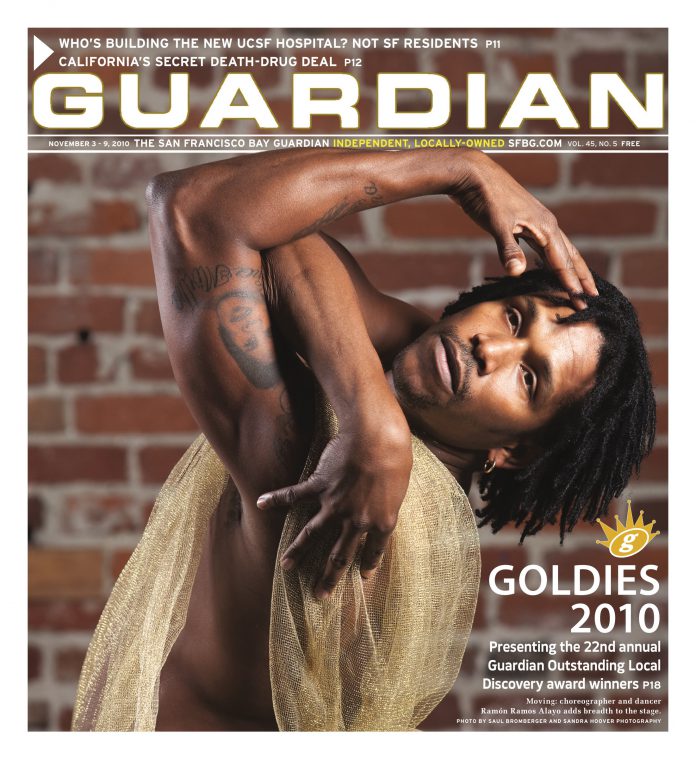“Listening to records is really the closest thing we have to a time machine,” says DJ Bus Station John. “Rest the needle in the groove, close your eyes, and the sensory experience can take you right back to 1979 — if you’re lucky enough to be that old, ha ha!”
Perhaps the most important DJ on the San Francisco gay scene in the past decade, Bus Station John has been the musical conduit for a huge cultural reawakening among younger homos. Called “the godfather of bathhouse disco,” he’s revered throughout the dance music world for his fastidious attention to party detail and his inimitable blend of extremely rare 1970s and early ’80s soul, boogie, garage, funk, Italo disco, Hi-NRG, and NYC no-wave.
But his influence goes far beyond helping to inspire the underground disco revival that has displaced techno as the music of choice on many of the world’s sophisticated dance floors. Believe it or not, disco and Hi-NRG used to be verboten in most gay clubs in the ’90s and early ’00s, sonic reminders of the early AIDS crisis that were trampled beneath pounding circuit music beats and generic diva screams. Imagine queers being ashamed of disco!
The arrival of life-extending protease inhibitors for HIV-positive men in the late ’90s opened the door for a not-so-painful appreciation of the recent gay past, and the time was ripe for a DJ to reprise the fantastic sounds of a generation tragically swallowed by disease — sounds that San Francisco had a huge hand in creating through the likes of producer Patrick Cowley, singer Sylvester, and dozens of other integral analog musicmakers.
Enter DJ Bus Station John in 2000, tastefully flaunting his dedication to the hot and heavy bathhouse and backroom days of yore. (The city, still gripped by AIDS panic, continues to outlaw these queer sexual venues.) Although the music is central to his mission, his parties are a complete package. From Xeroxed flyers of hand-made Gluesticked collages featuring Grace Jones or Joan Crawford in a spiky forest of exaggerated phalluses to his notorious “no cell phone” policy on the dance floor, he conjures the heady lust of gay history before social networking and the Internet replaced genuine human contact. “I work without a net, as it were,” he says. “There’s still a sense of discovery when you walk into my parties — no pretedermined list of ‘friends’ who are going. It’s a fresh and spontaneous mix.”
Bus Station John parties have also fostered the discovery of new spaces for homos to get down — past gigs have brought Deco Lounge, the Gangway, and the old Transfer to light as viable venues. His current regular parties include the disco-drenched Tubesteak Connection (Thursdays, 10 p.m., $4. Aunt Charlie’s Lounge, 133 Turk, SF. www.auntcharlieslounge.com) and the wonderfully named Le Perle Degli Squallor (first Saturdays of the month, 10 p.m., $5. The Hotspot, 1414 Market, SF.).
Musically, Bus Station John’s most meaty contribution to clubs, besides fostering the rediscovery of past genius, may be the renewal of classic disco song structure. His selections bring back the notion of dancing as erotic hold-release, an embarkment on a series of expertly crafted journeys. As a DJ, it’s OK (heroic, even) to let people’s attentions wander when a new track is abruptly introduced, then have them relax into an ultra-melodic verse-chorus-verse format as they freshen their drinks and eye a hottie or two. Because when the hypnotic extended outro hits and the red lights kick in, everything falls into place and it’s pure sexytime on the dance floor.
For more information, contact Bus Station John at djbusstationjohn@gmail.com.

